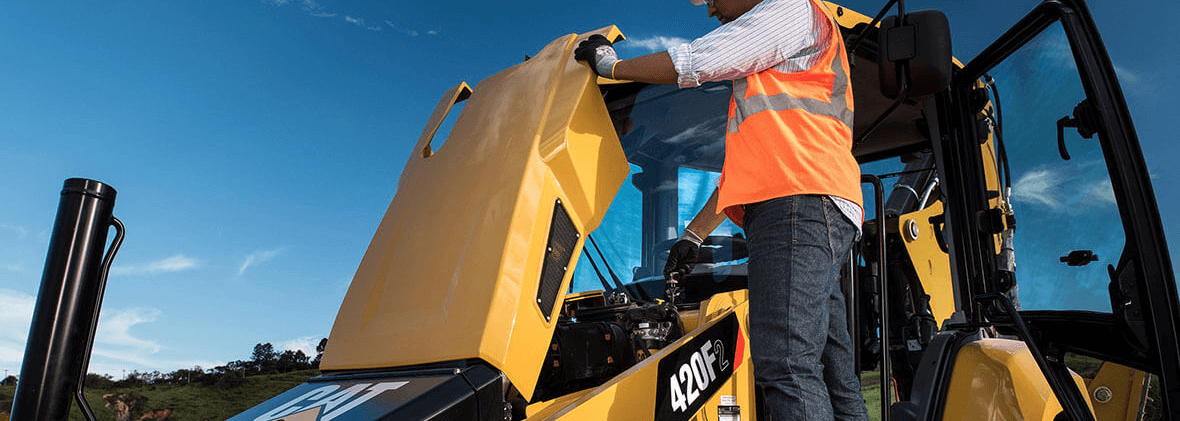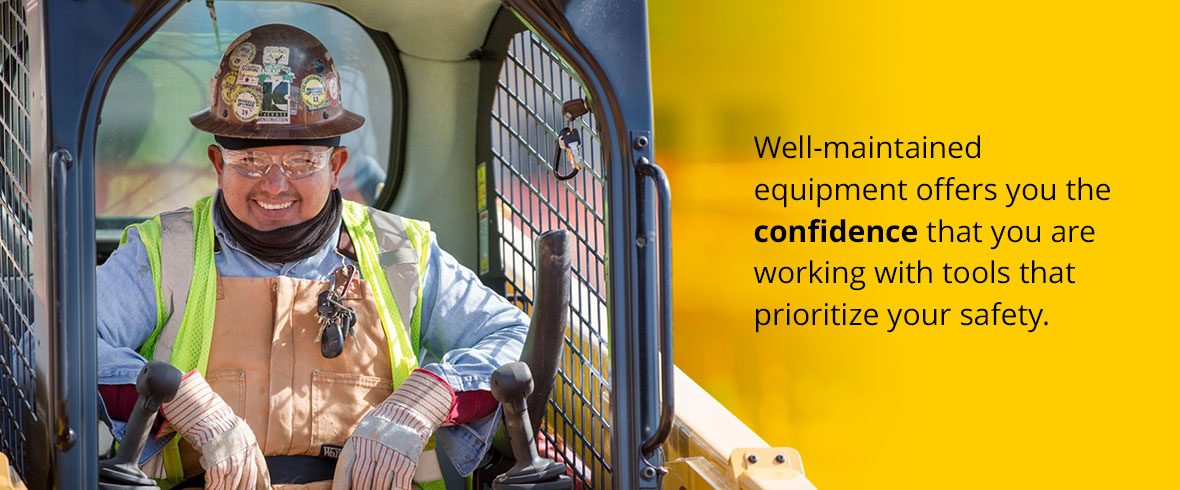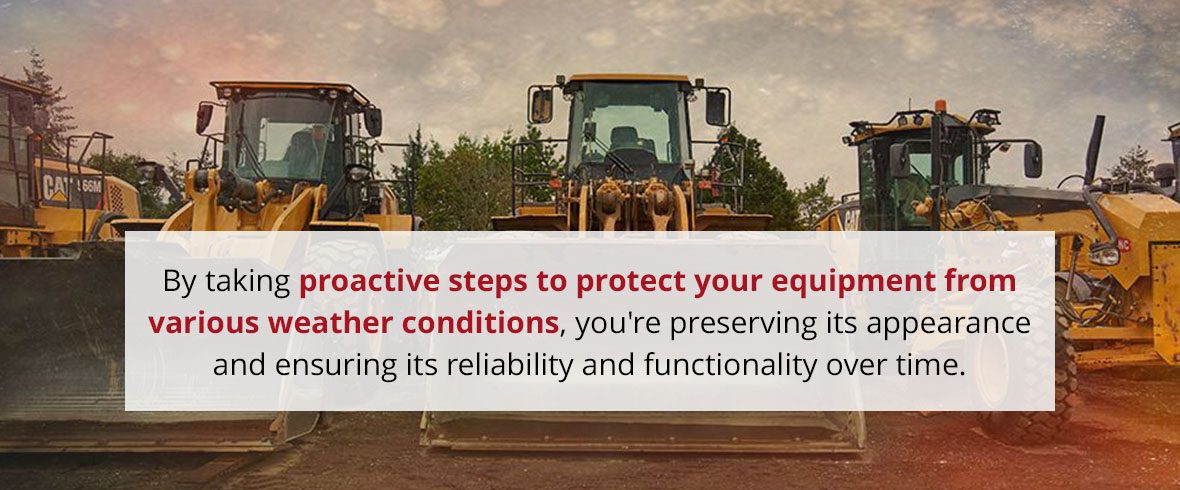
Rental Equipment Maintenance: Tips for Long-Term Use
Renting heavy equipment helps contractors save money, avoid long-term storage, and access the latest models. But even though providers like The Cat® Rental Store inspect and service machines between rentals, renters are still responsible for daily care and safe operation while equipment is on site. Following clear maintenance practices will help you maximize uptime, reduce costs, and hand machines back in excellent condition.
Why Equipment Maintenance Matters
Taking care of rented machines delivers benefits such as:
- Better performance and fuel efficiency: Daily care helps engines run smoother and burn less fuel.
- Improved safety for crews: Inspections catch hazards before accidents occur.
- Lower risk of downtime: Addressing issues early keeps projects on schedule.
- Regulatory compliance: Meeting OSHA and local standards protects workers and avoids fines.
- Extended machine life: Careful operation reduces wear and makes handoff easier for both renter and dealer.

14 Maintenance Tips for Rented Equipment
These rental equipment maintenance tips will help you get the most from your machines. Each tip is paired with an example to show how it applies in real-world conditions:
- Follow Manufacturer Guidelines: Read the operator’s manual and follow service intervals. Example: Skipping daily diesel exhaust fluid checks on a machine can cause error codes and downtime.
- Keep Machines Clean: Excessive mud and debris can impact performance. Crews on road projects should rinse machines at the end of shifts so they are ready to go the next morning.
- Check Fluid Levels: Inspect engine oil, coolant, and hydraulic oil according to the operator’s manual. On summer paving jobs, coolant checks can prevent overheating. Report leaks right away.
- Grease Moving Parts: Pins and joints wear quickly without lubrication. Example: Compact track loaders in dusty conditions need extra greasing to prevent grinding and failures.
- Avoid Misuse: Use machines only for their intended purpose. Example: Using a skid steer to haul oversized pallets risks tipping and damages hydraulics.
- Train Operators: Untrained use is a major cause of rental damage. Example: New operators should learn model-specific controls to avoid mishandling material and jobsite hazards.
- Conduct Visual Inspections: Walkarounds help catch issues before they worsen. Example: Spotting a worn tire on a truck can prevent a blowout.
- Monitor Wear and Tear: Pay attention to track shoes and tires, bucket teeth and cutting edges, and hoses and couplings. Example: Crews clearing debris after storms should evaluate all high-wear items to ensure maximum machine productivity.
- Report Issues Promptly: Call the dealer when issues arise. Example: A backhoe hydraulic line leak should be reported so Cat support can send a tech (https://www.catrentalstore.com/en_US/about-us/solutions.html).
- Adjust for Conditions: Adapt to weather. Example: In freezing temps, switch to winterized fluids; in sandy terrain, reduce tire pressure for stability.
- Prepare for Breakdowns: Know support policies. Example: Cat dealers provide 24/7 emergency service. Crews should keep dealer contacts handy.
- Leverage Dealer Support: Ask about extras like telematics, fuel service, or scheduled inspections. These services save time and reduce workload.
- Store Equipment Safely: Park machines on level ground, secure them with locks, and cover if possible. Example: Contractors storing equipment overnight at municipal sites should fence off the area.
- Protect Against Weather: Exposure shortens lifespan. Example: Cover electrical connections on aerial lifts during heavy rain. Long sun exposure can crack hoses and seals.
Seasonal Maintenance Considerations
Maintenance needs change with the season. In winter, use cold-weather fluids, warm up engines before use, and protect batteries from freezing. In summer, keep cooling systems clean, watch for overheating, and hydrate operators as part of your daily safety checks.
FAQs About Rental Equipment Maintenance
Do rental companies maintain equipment for you?
Yes. Providers like The Cat Rental Store inspect, service, and repair machines between rentals. Renters are responsible for daily inspections and reporting issues while equipment is in use.
What daily checks should renters perform?
Check oil, coolant, hydraulic fluids, tires or tracks, lights, and safety devices. Also clean the machine so issues are easier to spot.
How can I prevent equipment damage during rental?
Train operators to follow load limits and never bypass safety controls. Store machines securely and protect them from harsh weather.
What if my equipment breaks down during a job?
Contact your rental provider immediately. Cat dealers offer responsive support and can dispatch technicians or replacement units to reduce downtime.
How does seasonal weather impact maintenance?
Winter requires special fluids and battery protection, while summer requires cooling system care. Seasonal adjustments keep machines reliable in extreme conditions.

Partner With The Cat® Rental Store
Proper maintenance protects your crew, your schedule, and your bottom line. The Cat Rental Store offers well-maintained equipment, dealer support, and expert advice. With more than 1,300 locations worldwide, finding reliable machines is easy.
- Wide selection: Choose from a wide range of well-maintained equipment.
- Expert guidance: Get help with unexpected breakdowns and season-specific maintenance tips.
- Flexible rental terms: Adjust agreements to fit your project schedule.
- Convenient access: With more than 1,300 locations, it’s easy to find what you need.
- Simple next steps:
- Find your nearest location
- Browse heater rentals online
- Request a quick quote today